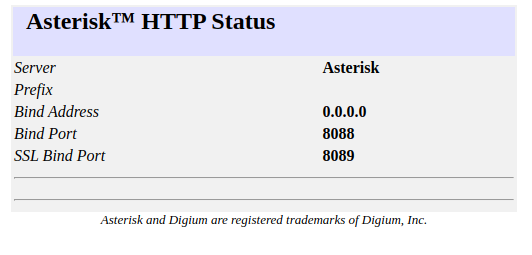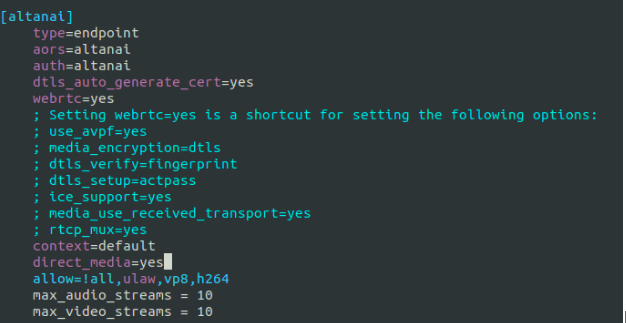Mapping the energy difference between a mesh and a SFU video mode setup
One can setup astrisk from theor online manual setup instriction [5] or use the dockerfile given along with this project to setup a SFU webrtc enabled conferencing sip and media server.
httpd
[general]
enabled=yes
bindaddr=0.0.0.0
bindport=8088 ; Port to bind to for HTTP sessions (default is 8088)
tlsenable=yes ; enable tls - default no.
tlsbindaddr=0.0.0.0:8089 ; address and port to bind to - default is bindaddr and port 8089.
tlscertfile=/etc/asterisk/keys/asterisk.crt
tlsprivatekey=/etc/asterisk/keys/asterisk.key
Check status on console
*CLI> http show status HTTP Server Status: Prefix: Server: Asterisk Server Enabled and Bound to 0.0.0.0:8088
HTTPS Server Enabled and Bound to 0.0.0.0:8089
Enabled URI's: /httpstatus => Asterisk HTTP General Status /phoneprov/... => Asterisk HTTP Phone Provisioning Tool /metrics/... => Prometheus Metrics URI /ari/... => Asterisk RESTful API /ws => Asterisk HTTP WebSocket
Enabled Redirects: None.
Check status on web
dialplan in /etc/asterisk/extensions.conf
exten => 7000,1,Answer()
same => n,ConfBridge(sfuconfbridge)
same => n,Hangup()
Description of the endpoints in pjssip
[sfuconfbridge]
type=aor
max_contacts=5
remove_existing=yes
[sfuconfbridge]
type=auth
auth_type=userpass
username=altanai
password=password
[sfuconfbridge]
type=endpoint
aors=sfuconfbridge
auth=sfuconfbridge
dtls_auto_generate_cert=yes
webrtc=yes
; Setting webrtc=yes is a shortcut for setting the following options:
; use_avpf=yes
; media_encryption=dtls
; dtls_verify=fingerprint
; dtls_setup=actpass
; ice_support=yes
; media_use_received_transport=yes
; rtcp_mux=yes
context=default
direct_media=no
allow=!all,ulaw,vp8,h264
max_audio_streams = 10
max_video_streams = 10
Note To enable multi-stream support in the PSJIP channel set max_audio_streams and max_video_streams options for a given endpoint to any number between 2 and 16 ( highest)
Description of conf applications in /etc/asterisk/confbridge.conf
[default_bridge]
type=bridge
video_mode=sfu
Note : other types of Video modes besides SFU include first_marked and last_marked. Where the first and last used user to join the conference with video capabilities is the single source of video distribution among all participant Also includes 'none' for no source and 'follow_talker' which very interestingly looks for audio activity before switching the video to active speaker.
direct_media is used to enable p2p transport in extensions.conf
[altanai]
type=endpoint
aors=altanai
auth=altanai
dtls_auto_generate_cert=yes
webrtc=yes
context=default
direct_media=yes
allow=!all,ulaw,vp8,h264
max_audio_streams = 10
max_video_streams = 10
And pjssip.conf
direct_media=yes ; Determines whether media may flow
; directly between endpoints (default: "yes")
-
Webrtc client : For the Webrtc SIP user agent to communicate with the SIP and media Server ( asterisk) I configured cyber_mega_phone_2k [1].
-
Compute Pressure API : For the experiments to record the CPU load and energy efficiency of the RTP topologies namely meshed, mixed and single forwarding I have used the Compute Pressure API [2] To activate goto chrome://flags/ and enable #enable-experimental-web-platform-features
-
Docker image for asterisk setup on docker engine [3]
-
Asterisk with PJSIP-pjproject
-
tcpdump to monitor the active calls
tcpdump -s 0 udp port 5060 -w /home/ubuntu/sipserver_1.pcap
References



